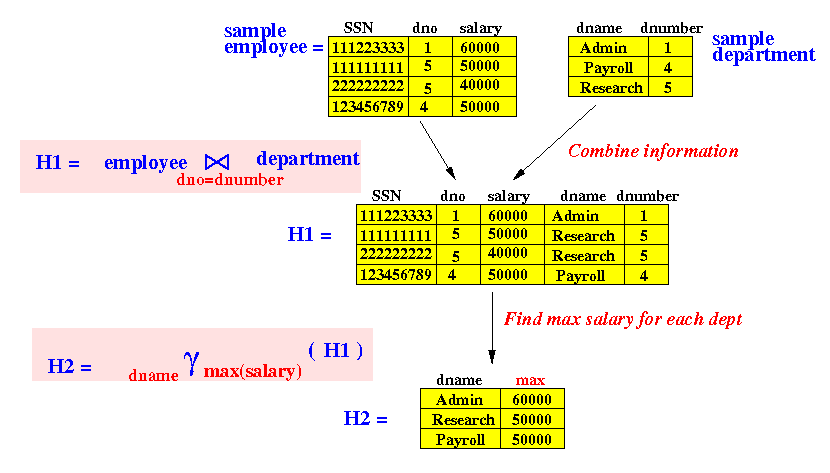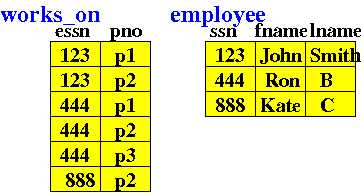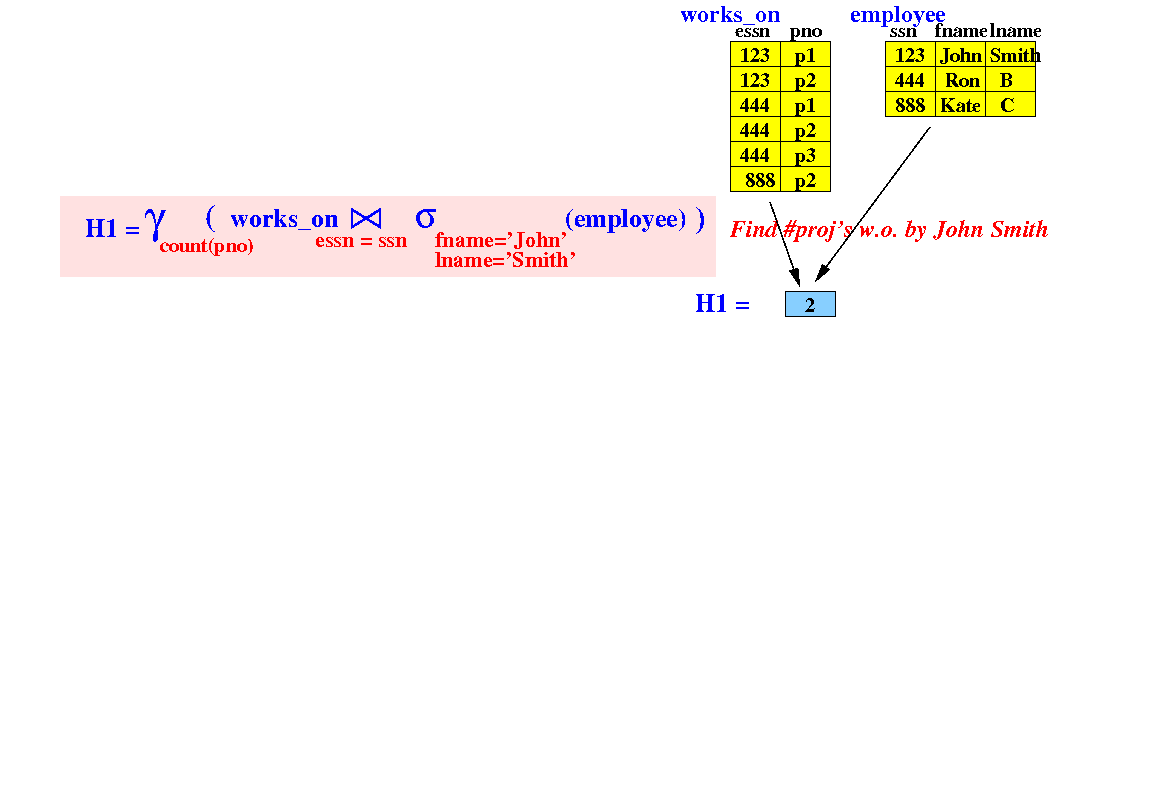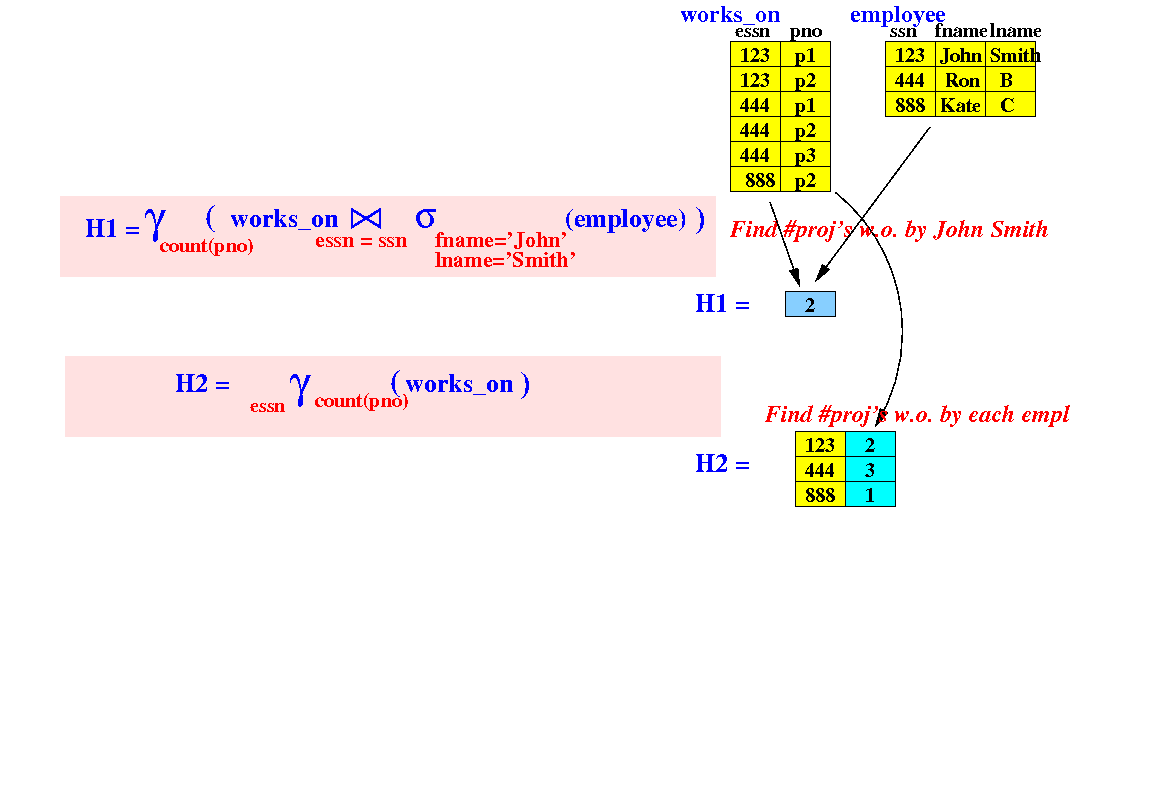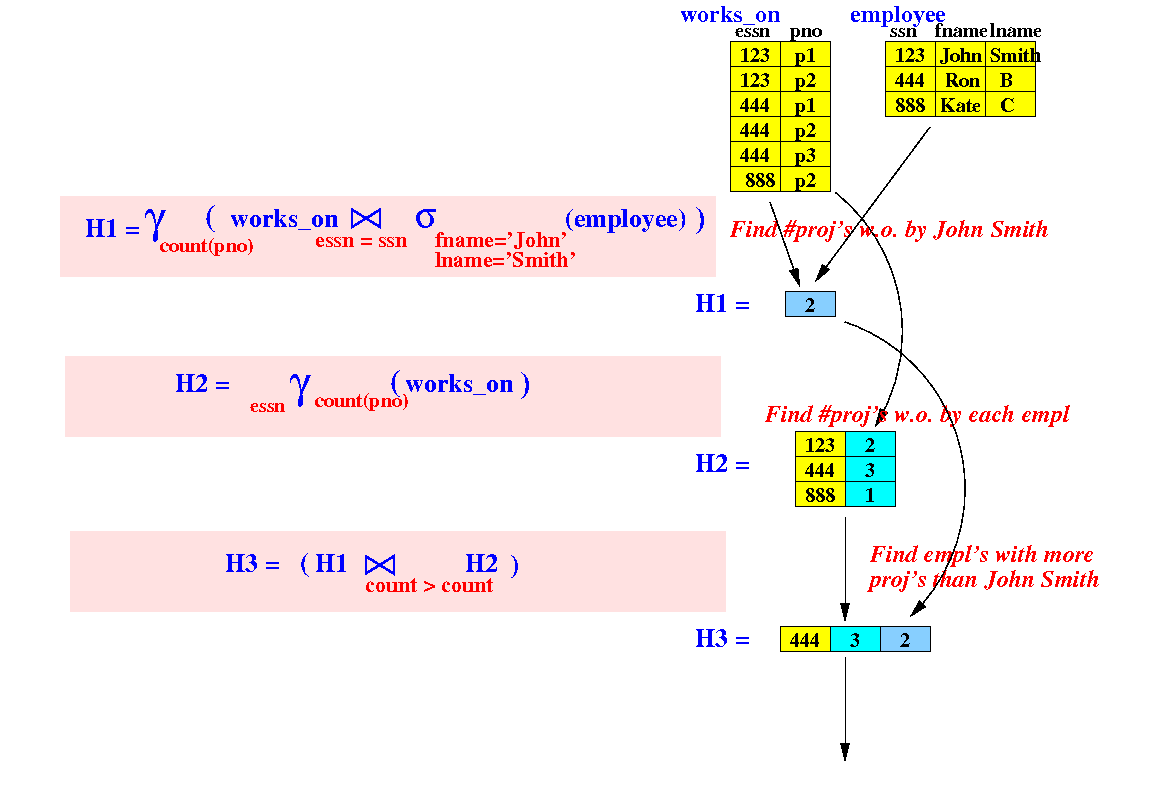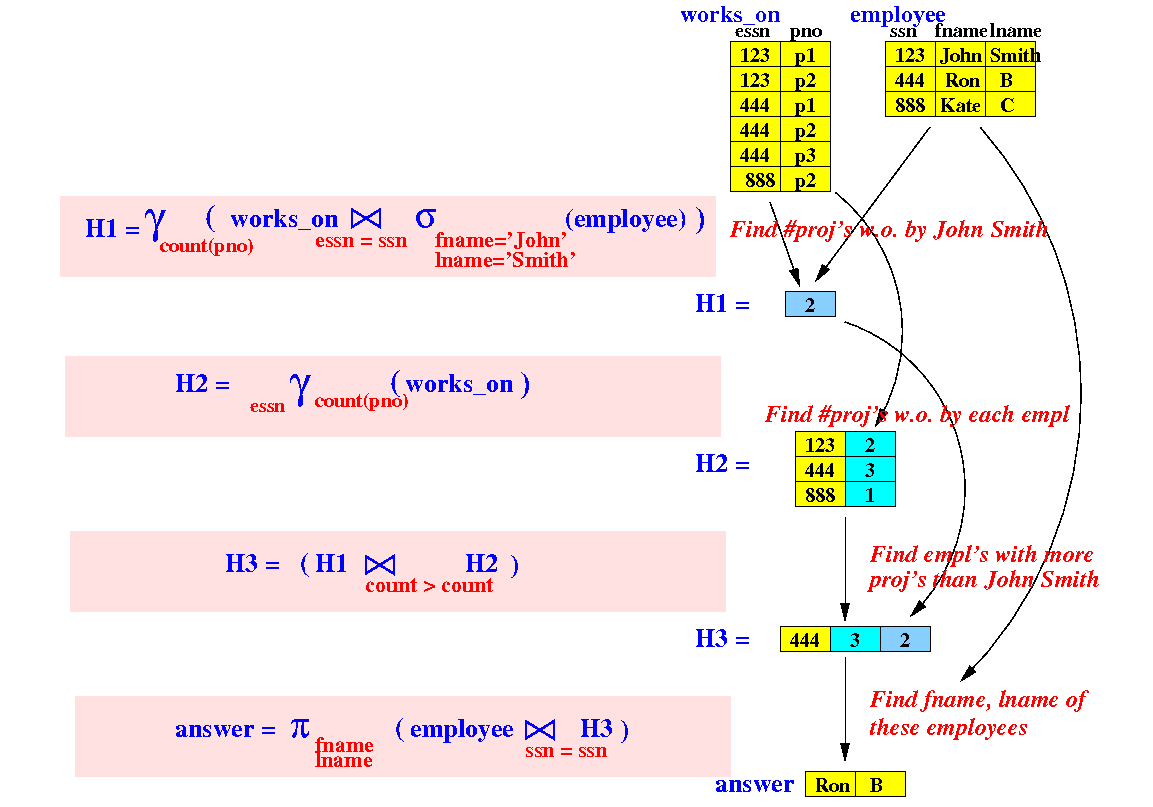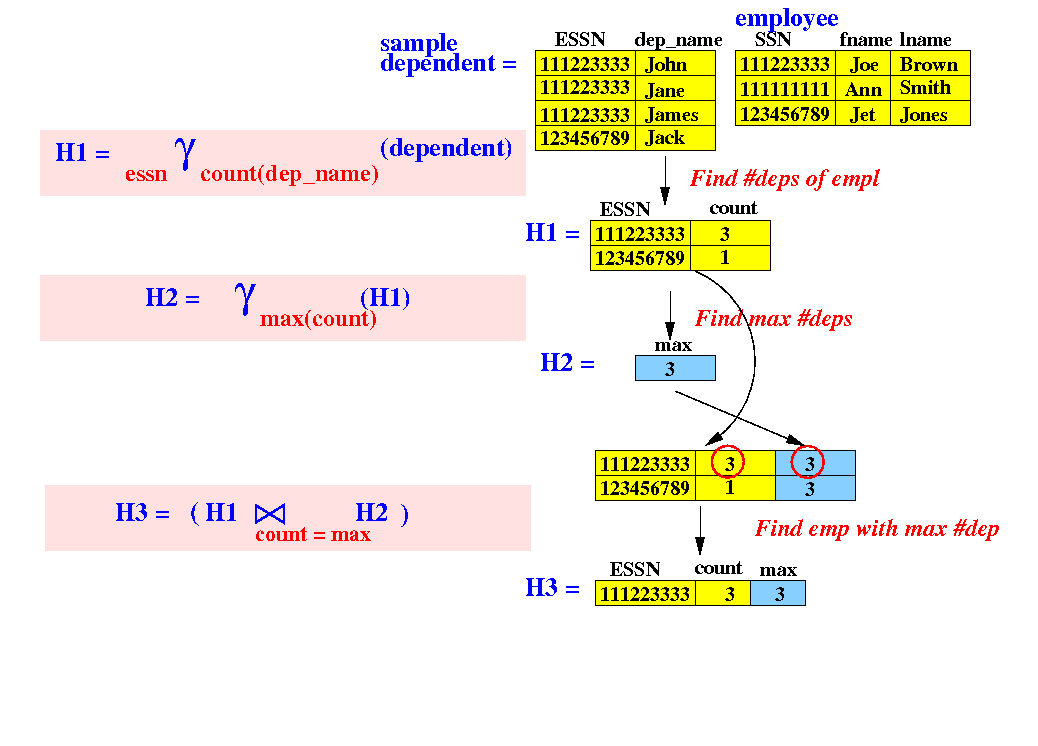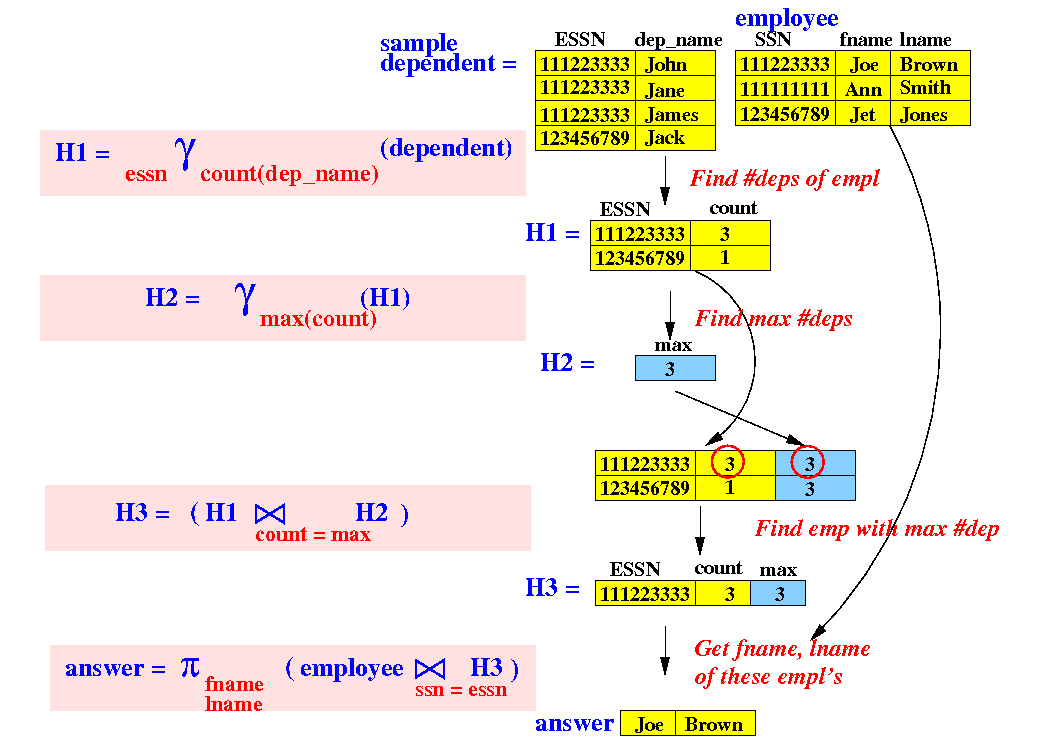Using
groups
and set functions
in Relational Algebra queries
|
Using
groups
and set functions
in Relational Algebra queries
|
Using
groups
and set functions
in Relational Algebra queries
|
Using
groups
and set functions
in Relational Algebra queries
|
Query 2:
Find fname and lname of all
employees who work on
more projects
than 'John Smith'
|
Query 2:
Find fname and lname of all
employees who work on
more projects
than 'John Smith'
|
Query 2:
Find fname and lname of all
employees who work on
more projects
than 'John Smith'
|
Query 2:
Find fname and lname of all
employees who work on
more projects
than 'John Smith'
|
Query 2:
Find fname and lname of all
employees who work on
more projects
than 'John Smith'
|
Query 3:
Find fname and lname of the employees
who have the most number of
dependents
|
Query 3:
Find fname and lname of the employees
who have the most number of
dependents
|
Query 3:
Find fname and lname of the employees
who have the most number of
dependents
|
Query 3:
Find fname and lname of the employees
who have the most number of
dependents
|
Query 3:
Find fname and lname of the employees
who have the most number of
dependents
|


